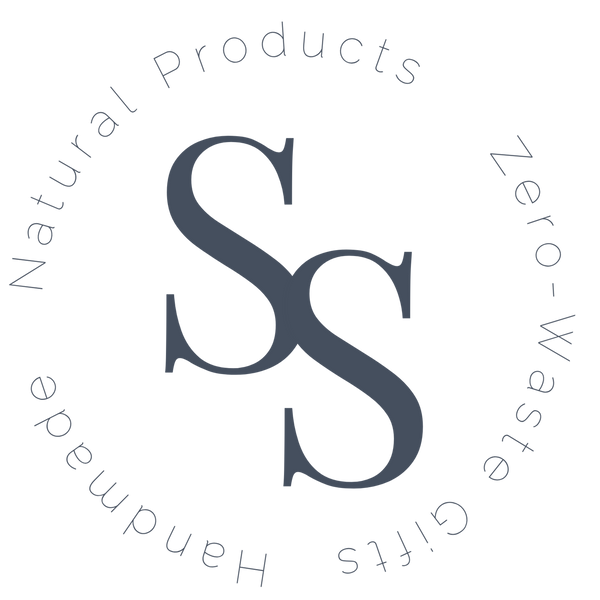Ever wonder why your expensive skincare routine isn't working? The answer might be hiding in plain sight on your product labels. Spoiler alert: it's all about pH balance, and no, you don't need a chemistry degree to master it.
What You'll Learn:
- Why 5.5 is the magic number for healthy skin
- How handmade soaps actually protect your skin barrier
- Why lotion bars are having a moment (and deserve it)
- Simple swaps that work for busy families
- Signs your current routine is sabotaging your skin
Your Skin's Natural Protection System
Your skin maintains a slightly acidic pH between 4.5 and 5.5, creating the "acid mantle"—your first line of defense against bacteria, environmental stressors, and moisture loss.
The simple version: Balanced pH = healthy skin. Unbalanced pH = problems like dryness, irritation, and breakouts.
When pH Goes Off Balance
Too Alkaline (High pH):
- Weakened moisture barrier
- Increased bacterial growth
- Irritation and sensitivity
- Faster aging
Too Acidic (Very Low pH):
- Stinging and irritation
- Disrupted oil production
- Risk of chemical burns
The Truth About Handmade Soap and pH
You've heard that handmade soaps are "too harsh" because they have a higher pH (around 9-10). This is largely marketing designed to sell more products.
Reality check: Quality handmade soaps have effectively cleansed skin for centuries because they contain:
- Superfatting: Extra oils that provide moisture
- Natural glycerin: Commercial manufacturers often remove this
- Plant-based ingredients: No harsh detergents or synthetic additives
Your skin is resilient enough to handle brief contact with higher pH soap and quickly return to its optimal range—especially when that soap contains nourishing ingredients.
They work with your skin, not against it: Your skin is surprisingly resilient. It can handle a brief encounter with a higher pH soap and quickly bounce back to its happy place—especially when that soap is loaded with nourishing ingredients.
The Smart Way to Choose Handmade Soaps
Look for soaps that: ✅ Use traditional cold-process methods (preserves all the good stuff) ✅ Include moisturizing oils like olive oil, coconut oil, or shea butter ✅ Skip the harsh additives and synthetic fragrances ✅ Are properly cured (this neutralizes excess lye)
Pro tip for busy parents: Keep different soap varieties for different family members. A gentle oatmeal soap might work perfectly for sensitive skin, while a more robust charcoal variety could be ideal for teens dealing with acne.
Learn all about how our handmade soaps will help you elevate your daily routine with our blog post - Natural Cleansing for a Healthier Greener Lifestyle.
Lotion Bars: A Smart Solution for pH Balance
Lotion bars are gaining popularity for good reason—they're an excellent choice for maintaining healthy skin pH. These solid moisturizers sit much closer to your skin's natural pH range because they're made primarily of oils, butters, and waxes rather than water and harsh emulsifiers.
Why Lotion Bars Work So Well
They're naturally pH-friendly: The simple, oil-based formula means fewer pH-disrupting ingredients.
They're incredibly practical:
- No spills in bags or during travel
- TSA-friendly for family trips
- Eco-friendly packaging
- Long-lasting and cost-effective
They deliver superior results:
- Rich in skin-supporting lipids
- No potentially irritating preservatives
- Concentrated formula requires less product
- Work best when applied to damp skin
How to Use Lotion Bars Effectively
Warm the bar between your palms, then apply to slightly damp skin. The moisture helps everything absorb better, and you'll use less product overall.
Perfect for busy families:
- Child-friendly—no mess or waste
- Travel-friendly for weekend trips
- Simple, recognizable ingredients
- Suitable for all family members
Learn more about how to use lotion bars in our blog post - The Complete Lotion Bar Guide.
Warning Signs Your Skin's pH Is Unbalanced
Your skin sends clear signals when its pH is off-balance. Here's what to watch for:
Common indicators:
- Persistent dryness despite regular moisturizing
- Frequent breakouts or unexpected irritation
- Increased sensitivity to familiar products
- Premature signs of aging
- Slow healing from minor cuts or blemishes
The encouraging news: Most of these issues can be resolved with strategic product changes and consistency.
The Bottom Line for Busy Humans
Maintaining optimal skin pH doesn't require a chemistry degree or a medicine cabinet full of products. It requires smart choices and consistency.
Focus on these four things:
- Quality over quantity: Choose fewer, better products that actually work
- Consistency beats perfection: Using good products regularly trumps perfect products used sporadically
- Listen to your skin: It's surprisingly good at telling you what it needs
- Be patient: Your skin needs time to adjust to changes
Your Action Plan
Week 1: Evaluate your current products. Look for pH information on labels.
Week 2: Make one swap—try a quality handmade soap or lotion bar.
Week 3: Pay attention to how your skin responds. Take notes!
Week 4: Adjust based on what you've learned.
Remember, healthy skin is a marathon, not a sprint. By understanding and respecting your skin's natural pH balance, you're setting yourself and your family up for long-term success. Whether you choose traditional handmade soaps or modern lotion bars, the key is selecting products that work with your skin's chemistry, not against it.
Ready to give your skin the pH balance it's been craving? Start with one simple swap and see what happens. Your mirror selfies will thank you later.




